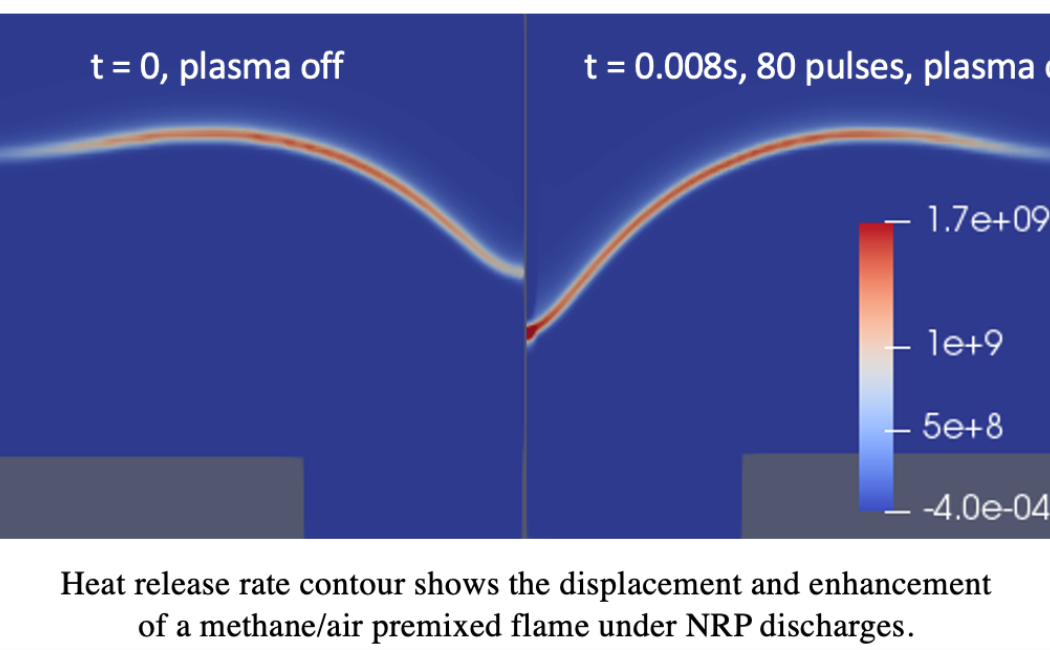Nanosecond Repetitively Pulsed (NRP) discharges
are a promising and efficient technique for plasma-assisted combustion
applications. In fact, they have been successfully used to initiate and control
combustion processes particularly when conventional ignition systems are rather
ineffective or too energy costly. Also, they have been used to enhance the lean
blow-off limit, or control combustion instabilities. Direct Numerical
Simulations (DNS) are a powerful research tool to understand these
plasma/combustion/flow interactions. However, the computational cost of fully
coupled detailed non-equilibrium plasma and combustion chemistry is
prohibitive. In this work, a phenomenological model to describe the effects of
non-equilibrium plasma discharges is developed. This model enables the description of the plasma channel as an energy source, considering the most important
phenomena occurring when NRP is applied for plasma-assisted combustion. Two
phenomena were modeled: 1) the excitation and the subsequent relaxation of the
electronic states of nitrogen molecules, which leads to an ultrafast increase
of the gas temperature and dissociation of species; and 2) the excitation and
relaxation of vibrational states of nitrogen molecules, which causes a much
slower gas heating


